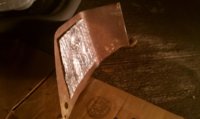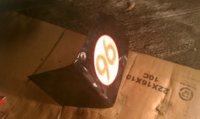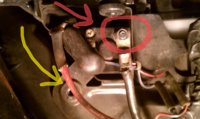To me, the odd part is this. .....I blow a fuse. Replace the fuse, turn the switch and blow the next fuse. That should happen everytime if I have a short. Why then, when I put in the next fuse and do absolutely nothing different, does it not blow the fuse and let me drive off. If it was a short, it should blow the fuse everytime.
From what you noted you most likely have what's called a threshold current failure of the main fuse. SAY WHAT???

Fuses are designed to blow at a certain current within a certain time. The time required to blow the fuse once it reaches its failure rating is inversely proportional to the current the fuse is seeing. Simply stated, the more current the fuse see past it rated value the quicker it will blow. A 20 amp fuse will actually not blow as soon as the current reaches 20 amps. It might last 1 or 2 minutes depending on things like the ambient temp and such.. But kick the current up to say 30 amps and it will blow fairly quick.. ( To those that know fuses don't misconstrue this info with a time delay fuse since they are rated to fail at a much higher percent over current rate.)
Back to the threshold current statement.. Your fuse is could be seeing current hovering just below or right around its failure value. You start your bike up, take off, all seems OK. But then you apply the brakes, or turn on the turn signals, this throws 3-4 amps more on the fuse and it finally melts. Or maybe just the headlight coming on puts it on the edge. (
I will note that from your comments on the randomness of it blowing there could be other issues but I'd at least check this)
So how can I tell if this is happening? Simple, connect an amp meter in series with your main fuse. With the bike running the current should be below 8-9 amps or so depending on if your headlight is on/off, and such. If you're seeing upwards of 17-20 amps you've got a problem. And if you do, where is it at???
There are only 2-3 things on the 650 that can draw this kind of current and not go up in smoke. The rotor is one and it has been my experience it's the #1 culprit behind problems such as this. If it's shorted it can draw upwards of 20 amps itself. And with due respect to the slap test, a shorted rotor will still create a magnetic field even while drawing major current. Once again, it might not be the rotor but its a simple test to rule it out by measuring its current. No need to run the bike, just connect your amp meter in series with the hot brush lead and turn on the key, read the amps. It should be right around 2.25 amps. More than 3 amps and you've got rotor problems, time for a replacement
If your rotor checks good and your current looks normal look at the grommets going through the headlight can and see it they've cut through and if any wires have rubbed through and are touching the can. Note there are some more checks you can do if the above doesn't uncover your problem.
Good luck and lets us know what you find. Inquiring minds want to know.

Ken
http://tinyurl.com/45ywb6a



